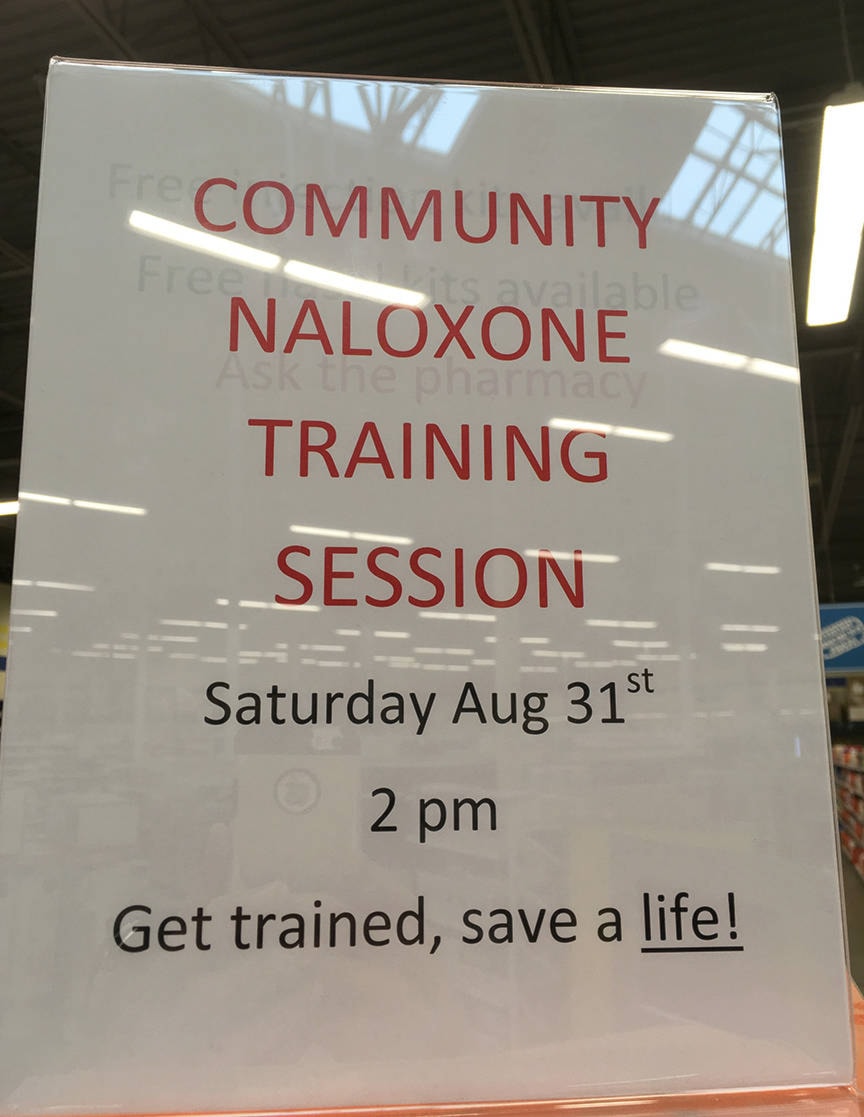The number of drug overdoses and deaths is lower in the Northern Interior - and across the province - this year compared to the same period in 2018.
There have been 11 deaths in the Northern Interior so far in 2019 as a result of illicit drug toxicity, according to a July 11 report from the BC Coroners Service. There were 59 deaths in total in 2018.
LOOK BACK: Burns Lake health providers on guard amid drug overdose crisis
For the Northern Health region, there have been 25 deaths from January to May this year, down from the 40 for the same period last year. There were 96 deaths in all of 2018.
While data on overdose deaths in Burns Lake wasn’t available, Northern Health tracks the number of emergency department (emergency room) visits from of opioid or suspected opioid overdoses.
Compared to the rest of the region the number of visits in Burns Lake remains relatively low, at less than 10, Northern Health said in a report on July 8.
However, that is slightly higher than the first half of 2018, when less than five people were reported to have visited the emergency room because of suspected overdoses.
Prince George had the highest number of emergency visits in the region, with 120 so far this year, and 299 last year.
On a provincial level, the expansion of harm reduction services as helped reduce the possibility of deadly overdoses, as the BC Centre for Disease Control (BCCDC) said in a report in June.
In fact, the BCCDC pointed out that “without access to and rapid scale up of harm reduction and treatment strategies, the number of overdose deaths in B.C. would be 2.5 times as high.”
In Burns Lake there has been renewed attention paid to helping people face the dangers of opioid use and drug overdoses.
The local Real Canadian Wholesale Club (RCWC) plans to host its first training session on how to use naloxone, a medication that reverses the effects of opioid overdoses. The session will be held at the end of August.
“Our local pharmacist has received interest from the Burns Lake community for increased education and awareness around naloxone,” as a spokesperson for RCWC told Lakes District News.
“To meet this need, he has arranged to host an information and training session in his store as a community service. This type of session does not replace one-on-one patient counselling offered by our pharmacists across the country to educate and support patients with opiate dependency through naloxone other treatments.”
The Southside Health and Wellness Centre has since 2016 had naloxone kits on hand, said manager Aileen Serle.
It also has harm reduction kits - aimed at disease prevention - which include clean needles.
Down the highway, the Houston Harm Reduction Committee (HHRC) has for about a year and a half been offering support to community members related to opioids and other drugs.
RELATED: July 17 discussion on opioid crisis in Houston a chance to start conversation
“The focus is on harm reduction. Whether it’s with opioids or not,” said Marian Ells, Manager of Houston Link for Learning, which hosts the HHRC.
“The focus is on getting the word out about services. We have set up dropboxes for needles [around Houston]. It’s powerful having the services come together. Residents are surprised that the group exists. The services are referring to each other more. It’s had a really good and positive effect.”
HHRC’s efforts have been enhanced by a $15,000 grant it received from the Opioid Dialogues Project offered through the University of Victoria’s Canadian Institute for Substance Use Research (CISUR).
The funding has allowed the HHRC to provide naloxone training, buy food for meetings and hire part-time summer students who organize community events.
In the Northern Health region, CISUR has provided $70,000 to community groups in Haida Gwaii, Houston, Smithers, Dawson Creek, Fort St. John, and Vanderhoof/Saik’uz First Nation. They are among 55 groups CISUR has supported across the province.
“A successful dialogue is one in which people leave with a better understanding of the people in their community, even if they don’t particularly agree with their views. In the ideal world, these new relationships lead to something,” said Nicole Bodnar, project coordinator with CISUR.
“At a Nanaimo dialogue, I overheard a person from a drug user group say to a friend that they didn’t realize how sympathetic the paramedics were to the drug user community. They assumed paramedics detested them. That kind of shift in understanding is so important and has a ripple effect.”
Two groups in Burns Lake applied for CISUR funding in 2017 but they didn’t complete their applications, Bodnar said.
Funding is still available for Opioid Dialogue Grants and applications can be found at https://www.uvic.ca/research/centres/cisur/assets/docs/form-call-opioid-dialogues.pdf
Blair McBride
Multimedia reporter
Send Blair an email
Like Lakes District News on Facebook
